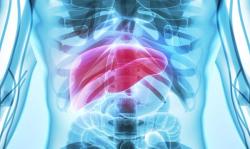
OR WAIT null SECS
Study Highlights Criteria for Early Abrocitinib Dose Increase for Eczema Patients
Following this post-hoc analysis, additional research may be necessary to assess other safety implications of a dose increase of abrocitinib for atopic dermatitis patients prior to Week 12.
Individuals with moderate-to-severe atopic dermatitis who begin treatment with 100 mg of abrocitinib per day are more likely to achieve Eczema Area and Severity Index (EASI)-75 responses at the 12-week mark if they reach EASI-50 by Week 4, according to new findings, and those who fail to reach such responses at Week 4 with 100 mg may be candidates for an early increase to 200 mg.1
These findings followed the conclusion of new research—led by April W. Armstrong, MD, MPH, from the department of dermatology at University of California Los Angeles (UCLA)—assessing a predictive model for evaluating abrocitinib’s efficacy at Week 12. Armstrong and colleagues noted that early prediction of the drug’s efficacy among those with atopic dermatitis could aid in identifying candidates for early increases in dose.
“Here we developed an approach to identify patients who would benefit from an abrocitinib dose increase from 100 mg/day to 200 mg/day after 4 weeks of treatment instead of waiting until week 12 to make that decision,” Armstrong and colleagues wrote. “We also studied whether an earlier dose increase would have a negative impact on platelet count in patients receiving treatment with abrocitinib for moderate-to-severe AD.”
Trial Design
The investigators aggregated data drawn from four phase 3 clinical studies looking at patients with moderate-to-severe atopic dermatitis, referred to here interchangeably as eczema. These individuals would have been given abrocitinib as a once-per day monotherapy (JADE MONO-1; JADE MONO-2) or as a treatment alongside existing topicals (JADE COMPARE; JADE TEEN).
Study participants who had been initially assigned to be given a 100 mg abrocitinib dose were the focus of the research team. These subjects were required to have been aged 12 years or older in JADE MONO-1 and JADE MONO-2, 18 or older in JADE COMPARE, and between 12 - 17 years within JADE TEEN.
The team looked at counts of platelets and simulations, all of which implemented a combination of safety, efficacy, dosing, and pharmacokinetic information from subjects given JAK1 inhibitors within a phase 2 psoriasis study and phase 2b and phase 3 eczema studies (JADE MONO-1, JADE MONO-2, and JADE REGIMEN). They excluded phase 2 psoriasis trial data from the assessment of the association between EASI percentage change and absolute platelet count at the 4-week mark.
The investigators’ evaluation involved participants who had received 100 mg and 200 mg doses of the drug abrocitinib. Efficacy predictors were assessed with training and validation, and a logistic regression model was utilized for training to look into predictors of response in a cohort comprising 70% of the pooled population.
These individuals had been randomly identified and stratified by study ID. Such predictive variables were then tested by the team through the use of the remaining 30% of their data for validation.
The research team’s full analysis set involved all subjects who had been given at least a singlee dose of the study drug. The team defined baseline as the final measurement assessed prior to the initial dose on day 1.
Dependent variables at the 12-week mark were EASI-75 and IGA responses, with predictor variables including 4-week scores for IGA, EASI, and Peak Pruritus Numerical Rating Scale (PP-NRS), alterations from baseline to the 4-week mark in IGA, EASI, and PP-NRS; and the noted percentage change from the point of baseline in EASI.
Conclusions
There were 453 participants in the training cohort. The investigators found that 72% of subjects who reported an improvement of 50% in their EASI score (EASI-50) by the 4-week mark and 16% of subjects who had no response to 100 mg dosing of abrocitinib reached EASI-75 by the 12-week mark.
They reported that 48% and 6% of the week 4 EASI-50 responders and nonresponders, respectively, were shown to have gotten an IGA response at the 12-week mark. The research team noted comparable outcomes for responders and nonresponders at the 4-week mark in terms of improvements of 4-points or greater from baseline within PP-NRS, IGA scores of 2, or EASI scores of 8.
The team also found that platelet counts had been similar, following an abrocitinib dosage increase from 100 mg to 200 mg, to subjects shown to have continuous dosing at either 100 mg or 200 mg.
“Limitations of this analysis include its post hoc nature and the small sample size of the cohorts, especially the validation cohort, which may limit the interpretation of results,” they wrote. “In addition, common clinical study assessments, such as EASI and PP-NRS, are not always performed in routine real-world clinical practices, which limits the practical applicability of our findings.”
References
- Armstrong, A.W., Alexis, A.F., Blauvelt, A. et al. Predicting Abrocitinib Efficacy at Week 12 Based on Clinical Response at Week 4: A Post Hoc Analysis of Four Randomized Studies in Moderate-to-Severe Atopic Dermatitis. Dermatol Ther (Heidelb) (2024). https://doi.org/10.1007/s13555-024-01183-3.
- Simpson EL, Silverberg JI, Nosbaum A, Winthrop KL, Guttman-Yassky E, Hoffmeister KM, et al. Integrated safety analysis of abrocitinib for the treatment of moderate-to-severe atopic dermatitis from the phase II and phase III clinical trial program. Am J Clin Dermatol. 2021;22(5):693–707.


